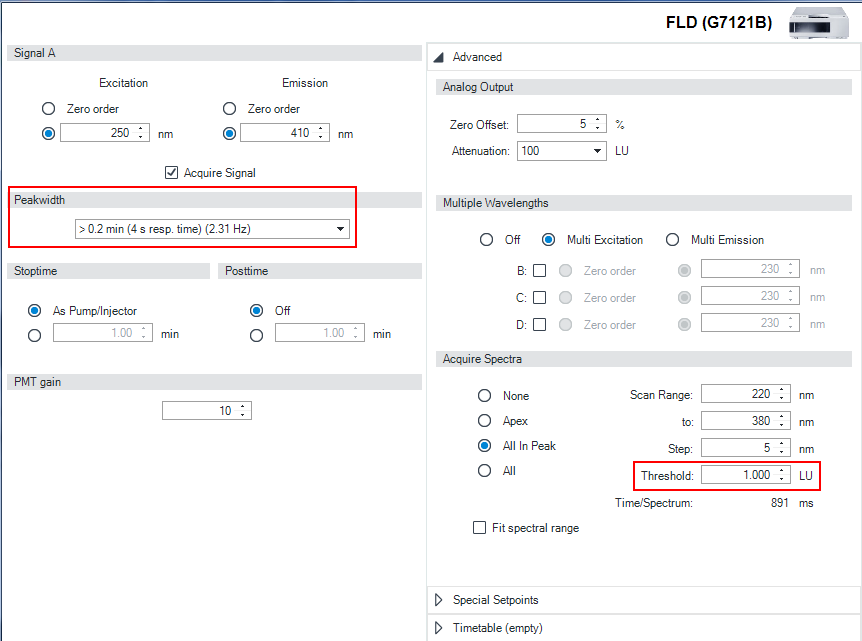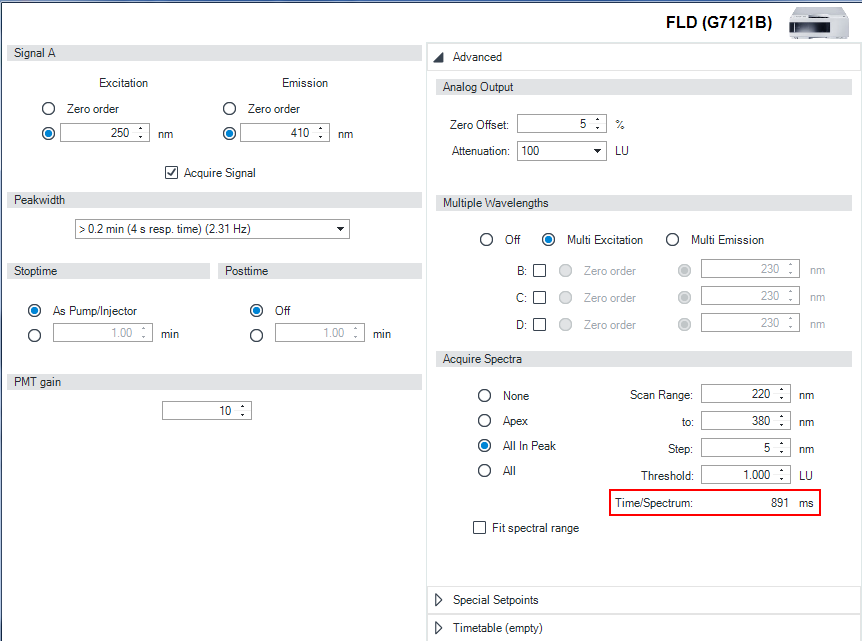How to Collect Spectra with Modes SPECTRA ALL IN PEAK and APEX SPECTRA ONLY
This section describes how to overcome a malfunction in the current implementation of the Agilent OpenLAB CDS with the Fluorescence Detector (G7121B). In these modes spectra intermittently are not collected into the data file.
The peak triggered spectra acquisition in the FLD is controlled by two parameters - THRS (Threshold) and PDPW (PeakDetector PeakWidth). In addition the parameter PKWD (Detector PeakWidth) only influences the filtering of the chromatogram.
-
Set the parameters THRS, PDPW and PKWD accordingly to the current chromatogram.
Best results for collecting peak triggered spectra are gathered when PDPW is 2 steps lower than PKWD, see Peakwidth Setting.
-
In the FLD’s setup-screen there are 2 fields to enter the PKWD Peakwidth (Responsetime) and the THRS Threshold (visible when Multi-EX or Multi-EM is selected). Defaults are: PKWD = 6 (0.2 min); THRS = 5.000 LU.

The selected values are fixed during the run.
THRS and PDPW influence the peak-triggered spectra-acquisition. You can change THRS in the FLD’s setup-screen; PDPW can only be changed with the Peakwidth-field in the Timetable.
Notes:
The peak-detection algorithm works best when a peak is reduced to 8 – 16 data points. The FLD collects the data points with an internal data rate of 74.08 Hz (= 13.50 ms) (1 signal only). The data reduction is only influenced by the PDPWparameter.
The peak-detector works online on the current chromatogram. This means that begin/apex/end of a peak is recognized with delay. Additionally the points of spectra are sequentially acquired. This means that the acquisition of wide range spectra lasts much longer than the acquisition of a short-range spectrum. When you have a fast chromatography it is nearly impossible to collect a "clean" APEX-spectra: the first/last points of the spectra are acquired before/after you have the highest concentration in the detector’s cell.
How long the acquisition of single spectra lasts is shown in the FLD’s setup screen.

base-id: 3585988619
id: 3585988619